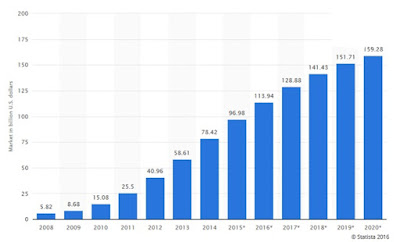Twitter Feed
Convergence: The Catalyst to Transform Scientific Research
by Melvin Greer Greer Institute for Leadership and Innovation A new transformative research approach is gaining global attention and adoption. The scientific opportunities enabled by convergence—the coming together of insights…
Cloud Computing Promises: Fact or Fiction
Cloud computing is currently making information technology headlines, and vendors are aggressively promoting the many benefits it can provide organizations. This White Paper addresses the claims and questions that are…
Super Smart Person’s Guide to Cloud Computing – San Diego
We are offering a fun and educational event just about the cloud. This session will help CEOs, Directors, Managers, and Dilberts learn what the heck the cloud is all about.…
A Managed Services Business Owners Lament: A talk with Joe D.
by Kevin L. Jackson A few days ago I received a call from a small business owner asking if I would meet him for coffee. He wanted to run some…
Technology and the Evolving Workforce
by Melvin Greer Managing Director Greer Institute for Leadership and Innovation According to a Greer Institute Workforce and Talent study, the 2020 workforce is both “the most educated and culturally…
Security attacks and countermeasures
by Sandra K. Johnson Cyber security is rapidly becoming a significant issue in the C-suite as well as the population at large. The results of Dell’s Global Technology Adoption…
ITIL in 7 Minutes!
What is ITIL & how can it benefit your organization? Learn the answers to these questions plus gain an understanding of the ITIL Service Lifecycle in this video. Download a…
How Resilient are FedRAMP Clouds Anyway?
By Jodi Kohut For the uninitiated, FedRAMP is the Federal Risk Authorizationand Management Program, a government-wide program that provides a standardized approach to security assessment, authorization, and continuous monitoring for…
Federal Tech Talk: Cloud Transition Challenges in Government and Industry
Cloud Computing is revolutionizing today’s business marketplace. While “learning the art of the possible”, corporate executives today are struggling with the business and security challenges associate with this important transition. Just…
Cloud, Mobile, Social and Cyber: 2015 Predictions That Will Rock The World (AGAIN!)
2015 PREDICTION TIME!! The worlds of cloud, mobile, social and cyber will continue expanding, permuting and recombining. Their individual effect on society and commerce will become moot as these technological…
- Enable cloud service arbitrage based on cost, performance or operational need;
- Help companies migrate operations to the cloud and assist with staff augmentation and training;
- Provide cloud service auditing and SLA monitoring services;
- Help in focusing and managing organizational cloud service demand;
- Provided toolsets to assist in the migration and integration of enterprise applications; and
- Help in change management and the selection and integration of other managed services.
By automating and operationalizing the governance of cloud services, CSBs can efficiently multi-source services and augment them with third party metering and monitoring. Using CSBs, organizations also accelerate their transition to hybrid IT models. This marketplace is typically segmented type of services: cloud brokerage and cloud brokerage enablement, wherein cloud brokerage enablement is further segmented into internal and external brokers. When used internally, cloud enablement platforms helps enterprises adopt the new hybrid IT and multi-sourced operating model. By building organic expertise, companies can personalize IT service consumption and unify
IT service delivery through the use of a corporate self-service store, a dynamic service marketplace, and continuous delivery. This centralized, supply chain approach unifies the order, execution, and management of multi-sourced solutions across legacy and cloud resources, by centrally delegating and tracking execution.
(This post was brought to you by IBM Global Technology Services. For more content like this, visit Point B and Beyond.)
( Thank you. If you enjoyed this article, get free updates by email or RSS – © Copyright Kevin L. Jackson 2016)
Cloud Computing
- CPUcoin Expands CPU/GPU Power Sharing with Cudo Ventures Enterprise Network Partnership
- CPUcoin Expands CPU/GPU Power Sharing with Cudo Ventures Enterprise Network Partnership
- Route1 Announces Q2 2019 Financial Results
- CPUcoin Expands CPU/GPU Power Sharing with Cudo Ventures Enterprise Network Partnership
- ChannelAdvisor to Present at the D.A. Davidson 18th Annual Technology Conference
Cybersecurity
- Route1 Announces Q2 2019 Financial Results
- FIRST US BANCSHARES, INC. DECLARES CASH DIVIDEND
- Business Continuity Management Planning Solution Market is Expected to Grow ~ US$ 1.6 Bn by the end of 2029 - PMR
- Atos delivers Quantum-Learning-as-a-Service to Xofia to enable artificial intelligence solutions
- New Ares IoT Botnet discovered on Android OS based Set-Top Boxes



